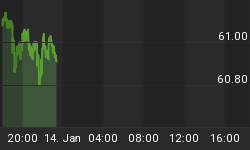In a development that must be hard to stomach for the political elite in Tehran, many Iranians are turning to U.S. dollars to offset the impact of sanctions and a faltering economy, the Wall Street Journal reported on Tuesday.
A steep plunge in the value of the rial, Iran’s currency, has led to a spike in demand for dollars in recent months from Iranians seeking safer assets, the report added. On Tuesday, one U.S. dollar bought 107,000 rials, compared with 43,000 rials in January.
When Iranian President Hassan Rouhani took power in 2013 a dollar bought 36,000 rials, according to CNBC reports. Unfortunately, for the average citizen in Iran currency devaluation has been a continuous problem since the country's 1979 Islamic Revolution when one dollar bought 70 rials.
Recently, Iranians have been flooding local banks to acquire dollars so much that exchanges have been forced to shut their doors to prevent long and chaotic lines. The problem for the Iranian government is mounting as average citizens fed up with both a weak economy and a plunging currency have taken to the streets in several cities across the country in protest.
How bad are things?
The situation is getting so bad that President Rouhani was summoned by the Iranian parliament on Tuesday for the first time ever to explain the country’s worsening economic crisis. The embattled leader is under pressure to reshuffle his government amid economic turmoil that sees little signs of relief.
Rouhani’s answers failed to convince parliament members and his case has been referred to the judiciary, according to local news agencies. Related: New Deal Boosts Uber Valuation By $10 Billion
Just a few days earlier on Sunday, so-called scuffling broke out in the Iranian parliament after the country’s economic and finance minister, Masoud Karbasia, was fired. Supporters and opponents of Karbasia clashed as they debated his possible impeachment, the European Pressphoto Agency reported. He was removed from office after a narrow parliamentary vote of 137 to 121.
They could get even worse
All of this fallout and unrest started to develop in May when President Trump announced he would reimpose sanctions against the Islamic Republic over its nuclear development program put in place in 2015, a key part of President Obama’s foreign policy legacy.
The first wave of sanctions kicked in earlier this month with another wave set to directly hit the country’s energy sector on November 4. So far, initial sanctions have taken a toll on Iran’s trade in gold and other precious metals, its purchases of U.S. dollars and its automotive industry.
Not surprisingly media outlets in many parts of the middle east, with obvious differing political agendas, have added fuel to the fire for the Iranian government, predicating a worst-case scenario.
Riyadh-based Arab News said on Wednesday that Iran faces “economic disaster” as its currency plunges to new lows. Things could get worse, the report said, citing economic analysts, while adding that ordinary Iranians should brace for “more misery.” It said that the year-long slide of the currency has accelerated in recent days as Iranians turn to the black market to buy hard currency.
“A shift to a convertible currency is a natural reaction when people lose faith in the local currency and want to shift quickly to something they will know will hold value as is the case now,” Oxford Economics senior economist Maya Senussi told Arab News.
“On the ground, sentiment is deteriorating as hopes that US sanctions can be circumvented are fading and that is reinforcing the flight to dollars in the ‘beat the clock’ fashion.”
Related: Floods Could Cut Indian Gold Demand In Half
Two weeks ago, Bloomberg reported that Iran’s Supreme Leader Ali Khamenei had urged Rouhani to deal with corruption, while the commander of the country’s powerful Revolutionary Guards told him to focus on Iran’s slumping currency. None of them, however, had any advice on how to ease the growing sense of despair and outrage in the streets.
November approaches
As the second phase of U.S. Sanctions against Iran approach, oil markets seem to have already factored in the reality that as much as 1 million b/d of Iranian barrels will be removed from global oil markets.
Saudi Arabia and Russia for their part have already indicated they could make up the difference by increasing more output, in effect capturing lost Iranian oil market share, a double whammy for the Islamic Republic that fought hard to regain market share, especially in Asia, after the end of earlier sanctions in 2015.
What’s next for the Rouhani-led government, however, is harder to predict. With the rial still plunging, citizens marching in the streets and the Revolutionary Guard voicing its angst, the country could be in for enough economic fallout that it might be forced back to the negotiating table with Washington over its nuclear development plans, a scenario mapped back in 2016 during the presidential campaign as Trump first considered scrapping the 2015 nuclear accord and re-imposing sanctions.
By Tim Daiss for Oilprice.com
More Top Reads From Safehaven.com

















